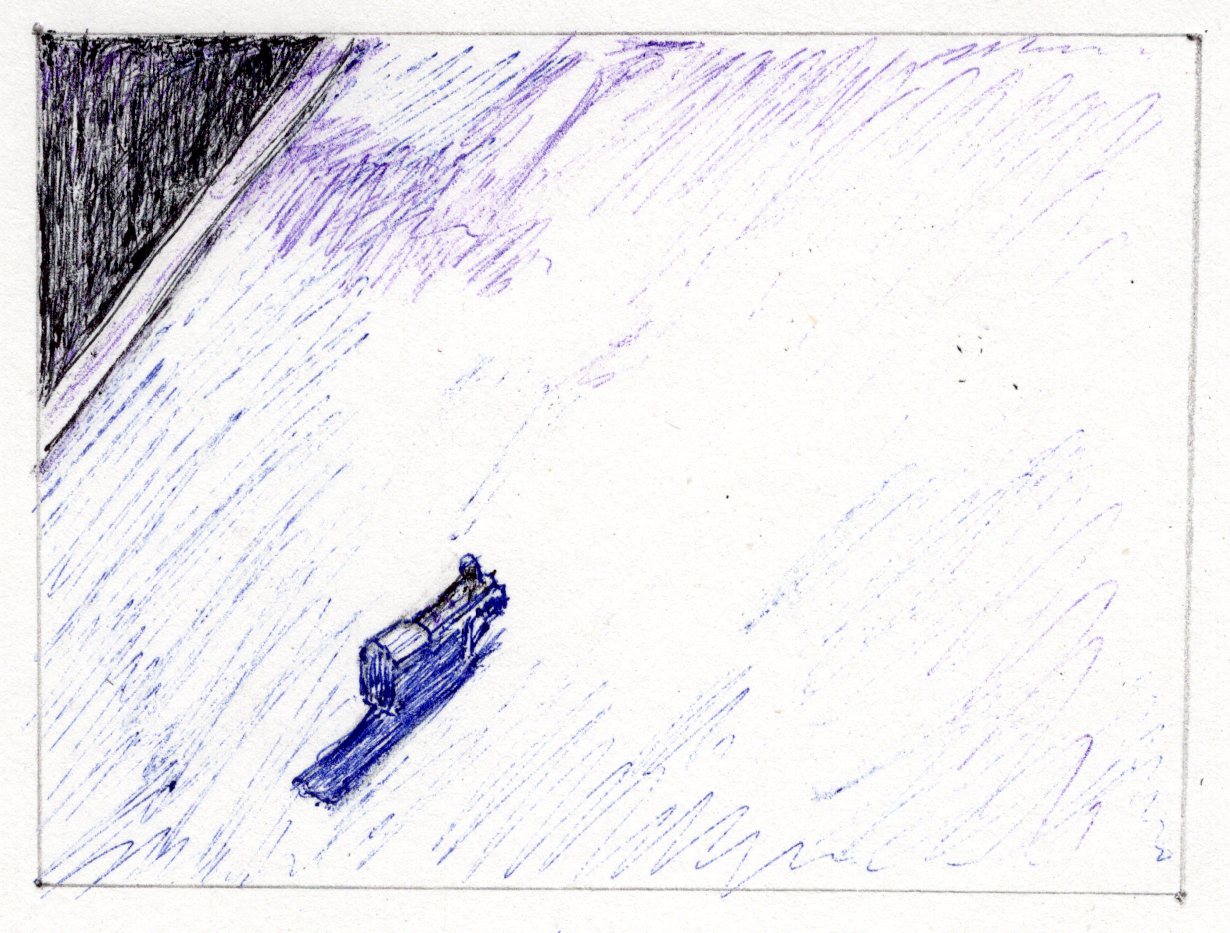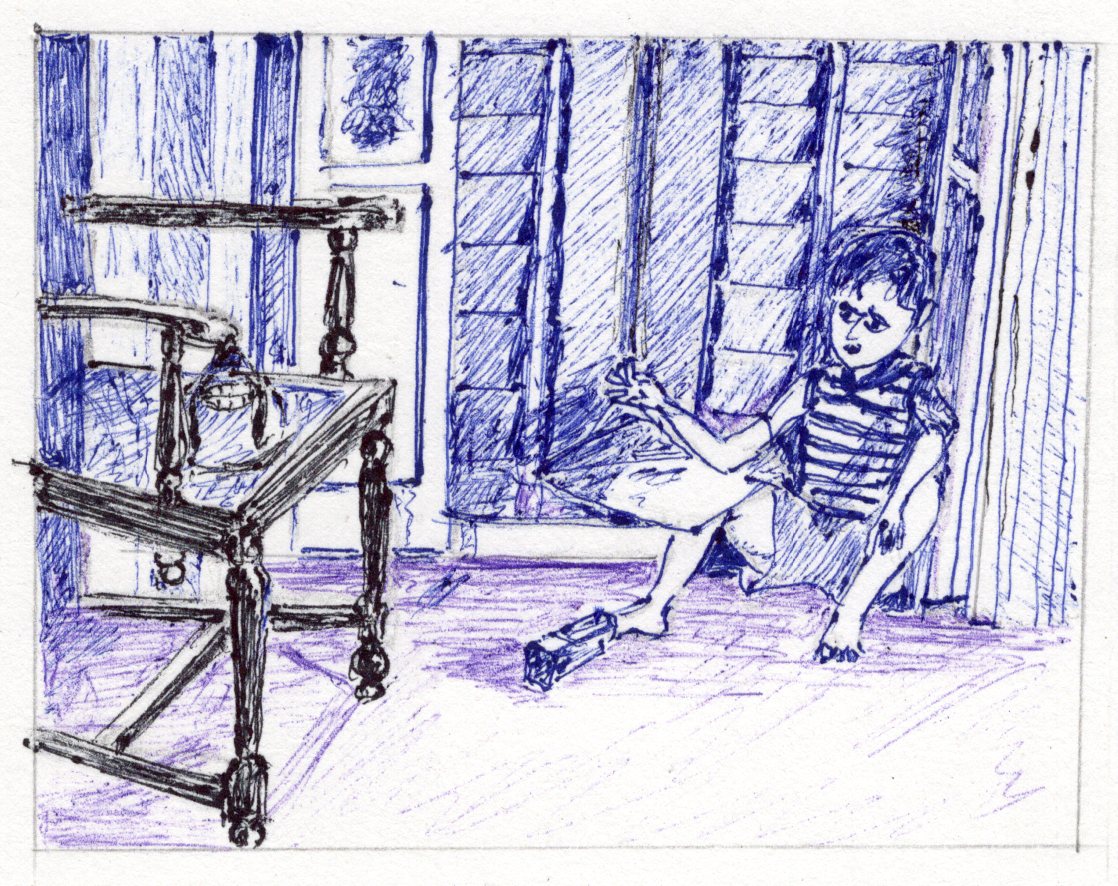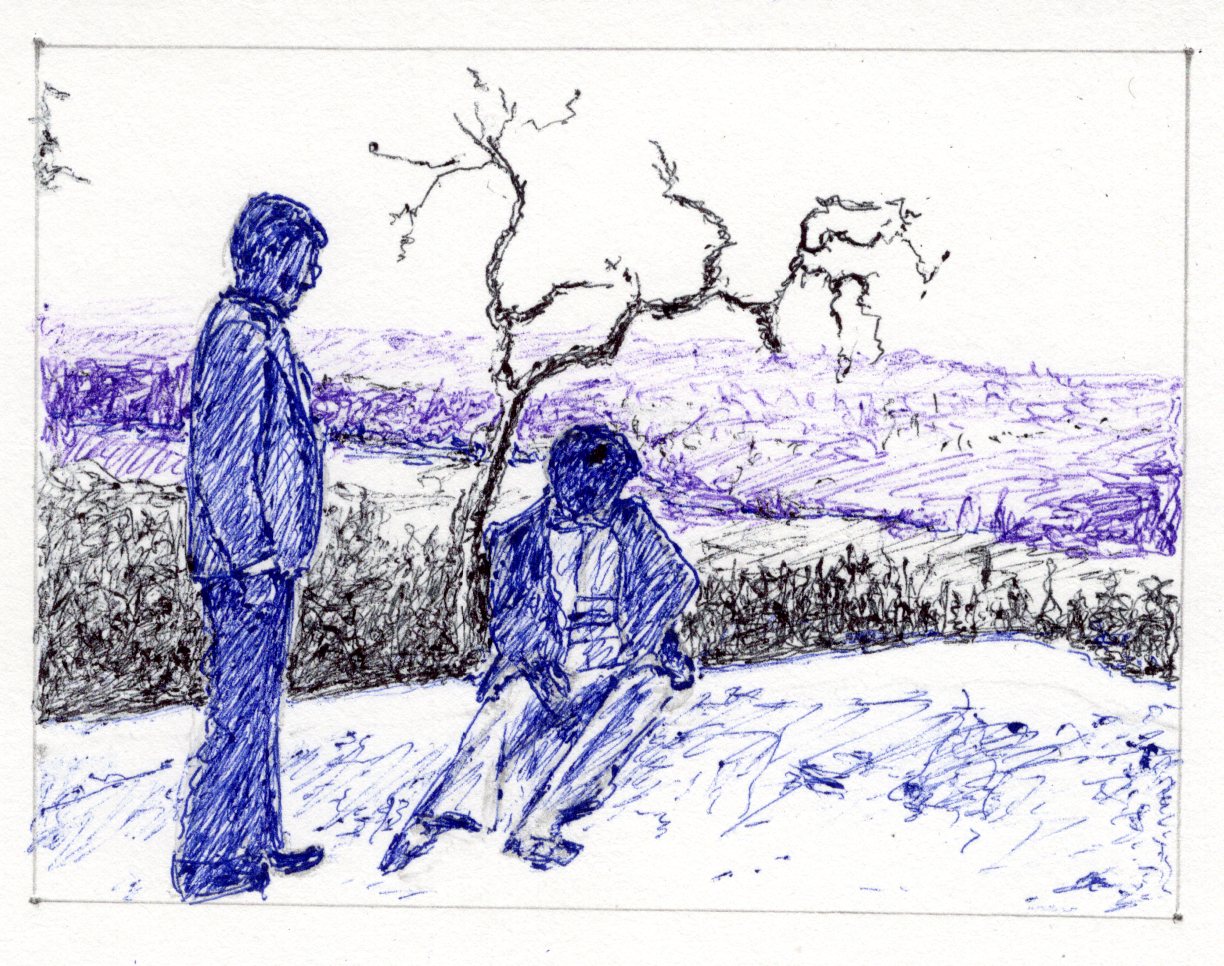This is the briefest chapter of Apur Sansar at just one minute on the screen.
Fade in
A toy engine goes unwinding and hits Kajal sitting on the floor.


The box still open in his hands, father stands by the door waiting for the boy’s reaction.

Kajal looks at father, then at the engine.

Just when father thought the toy’s charm was working, the engine is thrown back in rejection. This is not shown directly but through father’s reaction continued from the same earlier shot. The toy expends the rest of its energy—also off-screen over the same shot—in waste.
This is truly a Satyajit Ray moment in clarity, brevity and wit.
The event is covered in three neat and easily executable shots.
- The engine enters the frame and goes on to hit the boy, the view tilting up.
- The boy in close shot, static, looking up at the father and then closer by at the engine.
- The father, in medium shot and static, with the open box in hands and encouraging smile; then following the trajectory of the tossed toy and tracing its balance movement; finally looking at the boy, disappointed.
Ray himself would be the best person to wind and release the toy at the boy and then stand up directing his response. The boy is given a kite to engage him and asked to just stop the engine. That he instinctively extends his foot to do so is pure chance for this take.
Played by an actor Apu should easily be able to respond to an imagined trajectory and afterwards follow the engine. But notice that following the engine all the way until it halts would be excessive and has been avoided. Altogether a perfectly executed shot.
Notice that Kajal sits next to the same man-size chair that his father had sat on by the window in the earlier scene. Apart from the fact that it underlines his tininess, already the effect is that of a certain convergence. Plot thickens, so to speak. The area covered by the shot is like an inset of the more detailed action in the room when Apu entered and first saw his sleeping son. The coming third rejection concentrates on an even smaller zone of that same first action, a close up of the boy as he lies on the bed.
Dealing with non-professionals, the working atmosphere on the set would be of paramount importance. The unit members would go about their job in a business-like manner, displaying no interest in the actors’ performance. Only Ray interacts with them and no one is to be treated in any way as special, even less pampered. Chocolates for children, for instance, would be poison on a Ray set.
Violence is a part of Kajal’s character and is written as such in the role. Catapult, dead bird, defiance, throwing a stone, caning are all there in the story and the child actor needs to just step in and do as told. A surprising lot happens offscreen. Killing of bird, raising of cane and the toy engine being thrown away, are all implied, never shown. A crucial part of his role is done in casting. The right age and just plain cute, Kajal cannot be played by a stub-nosed child, for example.
><
Working on the sketch I realised that taking the engine as the boy does, Kajal sits with his legs inclined similar to how Apu sat a sequence ago against the bare tree opening his heart to Pulu.


Like father like son, one might subconsciously infer.
This would not be an over-reading of an innocent posture. Nothing is beyond Ray when it comes to using designing strokes such as this. He’ll simply do it and move on, never talk about it.
Both father and son have long hair, for instance. And unkempt as well. Can this ever be a coincidence?
><
Dissolve to
Kajal awake in bed, night.

The shot is reminiscent of Apu’s own shot after Aparna’s death. It’s the same concept, with the main subject in the middle and wide awake, while the movement of shadows over him suggests another’s presence.
This time the effort is to appeal to the child’s love of fantasy through fairy tales.
Apu: Kajal, will you be my friend? I tell very good stories. Stories about ghosts, demons, kings and queens, princes and winged horses. Want to hear them?
Again the appeal is rejected.
Fade out.
><
Why is the chapter dealing with such a crucial phase of the story so brief?
And in any case since the film is the shortest in the trilogy at just a hundred minutes, why not pad up a bit?
Visualise slowing down the process by any means and howsoever clever, and you’d realise the effort is bound to show up as padded. The momentum of the narration requires a quicker disposal of this stage because the film would just not resolve without the father and son coming together. So right from the beginning, it’s essentially a question of how they would come together, not whether they would do so.
Notice that unlike PP and Aparajito, Apur Sansar is NOT a sad film.
><
And finally a teaser question. Can the two incidents possibly be interchanged? Since they both are about rejection, how is their sequencing significant?
Essentially it is a question of ‘shading off’. Over the three instances element of violence gets successively subdued and intensity of rejection softens. Standing up against caning comes about through a dramatic development which marks out the respective positions of the three characters. Throwing the toy away happens between just father and son but it still resolves through anger. The third case in entirely centred on the boy and is nearly nil on violence—nearly nil because the boy still shakes off the father’s hand. That it is taking place at night further helps sequencing because falling at the end of the day, night suggests a natural closure.

Thank you for another exciting chapter Sir
LikeLike
Thank you Amit! Take care…
LikeLike